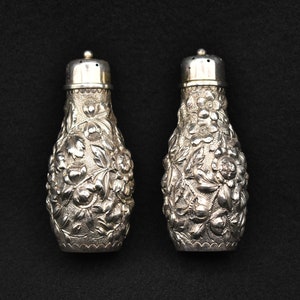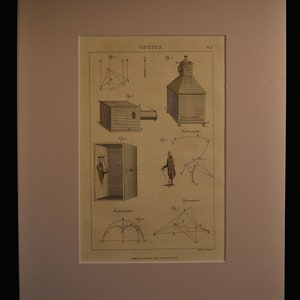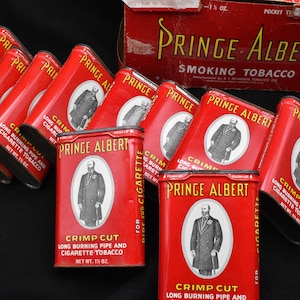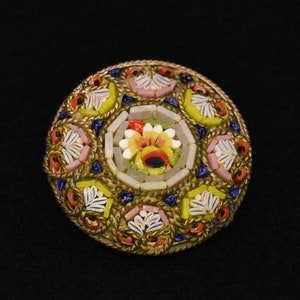







Antiques
Antique 1924 Marx 'Golden Goose' Tin Toy
(1)
-
DetailsThis wonderful goose hails from one of the most successful toy manufacturers in history. Marx was established in the early 1900s and was so immensely successful that Louis Marx, one of the founding brothers, was named as "The Toy King of The World," in 1937. The story of Louis Marx is truly amazing.
He was born in 1896, in Brooklyn, New York. His keenness was seen very early on, with Marx having graduated high school when he was merely 15 years old. He immediately began working for a toy manufacturer, Ferdinand Strauss, a manufacturer of mechanical toys. By 1916, at a mere 20 years old, a still wet-behind-the-ears Marx was managing Strauss' New Jersey factory. However, Strauss' board of directors had a disagreement with Marx over sales practices and Marx was subsequently voted out of the company.
Looking to separate himself from the industry, Marx joined the US Army as an Private. During his almost 2 years of service, Marx achieved the rank of Sergeant before leaving the Armed Forces and returning to civilian life in 1918. Marx always had a passion for the Armed Forces and it showed. Many of his later tin toys were Army models of trucks or equipment, and he even went so far as to name his children after the high-ranking Generals he managed to befriend during his career.
Realizing his penchant for toys and manufacturing, after his service, he started working for Newton and Thompson, a manufacturer of wooden toys. While there, he re-vamped their product line and increased their sales a full ten-fold! Not to be deterred from those financial windfalls, Marx and his brother David incorporated their company in 1919. Initially, they worked as a middle-man. They would purchase existing toys, at volume and then sell them to the consumer. It was fairly successful, but Marx's business was about to drastically change. Soon, Strauss, his former employer, came upon hard financial times. Louis saw the opportunity and offered to purchase two obsolete designs from Strauss - the Alabama Coon Jigger and Zippo the Climbing Monkey. Marx made some subtle changes to the design of these toys and re-released them, to incredible results. Within 2 years, Marx managed to sell 8 million of each of these designs. Although he managed to do this a few more times, most-notably his 'Mouse Orchestra,' his own designs cemented his status as one of the greatest toy makers on the planet. By the age of 26, a mere 3 years after establishing Marx Toys, he was a millionaire. Louis and David Marx clearly had a knack for this business and established some rules for his company. Marx listed six qualities he believed were needed for a successful toy: familiarity, surprise, skill, play value, comprehensibility and sturdiness. Initially, Marx produced few original toys by predicting the hits and manufacturing them less expensively than the competition. They firmly stood for their two policies: "Give the customer more toy for less money" and "Quality is not negotiable". His successes were so incredible that Marx Toys revenue actually GREW during the Great Depression. He established manufacturing facilities in some of the hardest-hit areas - Pennsylvania, West Virginia and even England - to great success.
To give you an example of the staggering success of Marx Toys, we can look at the year 1955. We shall compare them to another toy-manufacturing behemoth, Mattel. Mattel Toys managed to make $6 million that year, on an advertising budget of $500,000. Not too shabby, but when you compare it to Marx, the results are laughable. Marx spent a mere $312.00 on advertising that year, but managed to accrue sales of over $55 million! It seems that Marx's manufacturing and sales ideals were not just successful, but revolutionary. Sadly, Marx didn't jump onto the electronic toy bandwagon of the 70s and sales started to dwindle. The brilliant industrialist retired in 1972, selling his company to Quaker Oats for $54 million.
This Golden Goose is one of his original creations. The full name of this handsome girl is "The Golden Goose That Lays the Golden Eggs." Originally, this toy was sold with 4 small eggs. They would be put into the hole on her back and as she bobs and hops up and down, she lays the eggs. Unfortunately, the eggs are always missing, but apparently, wrapped chocolate Easter eggs work well (although I daren't test that). I've attached a small video and must apologize for the quality of the video. It does, however, show that it works perfectly (she dances more on a solid surface rather than the thick plush sheet on which I photograph our pieces). The winder is solid and the toy moves and bobs exactly as it did almost a century ago. As is found with most examples, there is some rubbing and surface scratches on the piece, but there are no appreciable dents or physical damage to speak of. All the connectors and attachments are perfect and there is no separation to the body, either... It really is in excellent structural condition, especially when compared to other examples. The gold still glints beautifully and the usually-rusted head is still mainly clear and beautiful.
She would make a wonderful addition to any vintage or antique toy collection! She measures 24 cm long by about 14 cm tall. Free shipping includes insurance, tracking and an obsessive attention to packing detail by yours truly.
As always, should you have any questions or comments, I'm always happy to respond to messages almost immediately.
Thank you very much for visiting C&K! -
Shipping & Policies
Shipping from Canada
Processing time
1-2 business days
Customs and import taxes
Buyers are responsible for any customs and import taxes that may apply. I'm not responsible for delays due to customs.
Payment Options
Returns & Exchanges
I gladly accept returns and exchanges
Just contact me within: 3 days of delivery
Ship items back to me within: 7 days of delivery
I don't accept cancellations
But please contact me if you have any problems with your order.
The following items can't be returned or exchanged
Because of the nature of these items, unless they arrive damaged or defective, I can't accept returns for:
- Custom or personalized orders
- Perishable products (like food or flowers)
- Digital downloads
- Intimate items (for health/hygiene reasons)
Conditions of return
Buyers are responsible for return shipping costs. If the item is not returned in its original condition, the buyer is responsible for any loss in value.
Frequently Asked Questions
Can I combine delivery on multiple items?
Of course! We'd be happy to assist. Just send us a quick message and we'll make sure to combine your items into a single package to reduce the shipping costs.
-
Reviews
Reviews (1)
Average:




